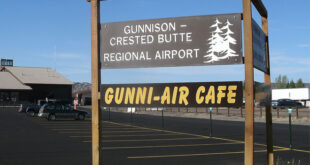Public open house, draft plan presentation, and public comments welcome
by Katherine Nettles
The Slate River Floating Management Plan, a draft document under public review and open comment phase, will be formally presented at an open house and public forum on Thursday, September 27, at 6 p.m. at the Crested Butte Town Hall. The presentation will give an overview of a plan compiled by the Slate River Working Group recommending adaptive river recreation management actions to uphold the ecological integrity and other “conservation values” of the Slate River.
The Slate River Working Group was formed by the Crested Butte Land Trust and the town of Crested Butte and is made up of 18 stakeholders, including ranch operators, the Bureau of Land Management, Colorado Parks & Wildlife, the Coal Creek Watershed Coalition, High Country Conservation Advocates, the Upper Gunnison River Water Conservancy District, Gunnison County, the Skyland Metro District, Irwin Guides, CB SUP, private landowners, and local river advocates.
The group has met several times since May “to identify and address river-specific management opportunities present in a 10.5-mile reach of the Upper Slate River, from the Oh-Be-Joyful campground to the north, to the Skyland Bridge to the south,” according to the working group webpage.
The objectives are further stated, “to develop a mutually agreed-upon, community-driven management approach that results in sustainable use of the Slate River. To address the challenge of integrating the needs and desires of many different stakeholders along the Slate River.”
Concern for the stretch of river has increased among wildlife advocates and private property owners due to intensified recreational use in the past five years, particularly among commercial and private stand-up paddle boarders. A 2015 visitation study indicated that more than 100,000 visitors and residents make use of the Slate River trails annually, and a 2012 survey at Oh-Be-Joyful concluded that approximately 2,000 visitors a year participated in non-motorized boating or rafting there.
The area has been recognized as some of the state’s highest functioning wetlands and wildlife habitat, with a great blue heron rookery and seasonal elk migrations.
“Preliminary observations collected by [Western State Colorado University] researchers indicate that the Great Blue Heron are easily disturbed by the presence of river recreationists … flying away from nests in response to a river user passing underneath the rookery … WSCU researchers recommend a floating restriction from March 15 to June 15 to protect the Herons from disturbance during the early and sensitive nest initiation period but due to the uniqueness of this rookery, they ultimately suggest that all activity be prohibited beneath the rookery for the full breeding season, March 15 to August 1,” according to the draft.
The river’s proximity to downtown Crested Butte and the fact that it flows through private property make it particularly sensitive to misuse and conflict as well. The working group webpage says “new concerns about habitat protection, water quality, commercial use, and the protection of private property have arisen. These issues are compounded by the patchwork of landowners and managers along the banks of the Slate.”
The draft management plan, which can be viewed in full on the working group webpage, concentrates on “river recreation-specific issues” in seven areas: private property rights; agricultural rights; wildlife; variable river flows; river etiquette; access and legal constraints; and infrastructure needs.
Draft recommendations include a signage and outreach plan (possibly with a representative at popular access points) that educates users on river etiquette, including trespass laws and private property boundaries; designating a quiet zone; and encouraging users to put in at Oh-Be-Joyful, where significant parking and permanent restrooms are available, instead of at Gunsight Bridge.
Recommendations also include an extensive wildlife and river-fencing plan, requesting river users not to bring dogs floating.
A voluntary no-float period on the upper reach of the river (from Gunsight Bridge to the Rec Path) from March 15 to June 15 would aim to protect heron brood rearing during their critical nesting period; annually monitoring the heron rookery and collecting long-term data on impacts would inform ongoing adaptive management solutions.
Hedda Peterson, stewardship director of the Crested Butte Land Trust, said much of the comments they have received so far have been supportive, but emphasized one issue.
“There is a lot of anxiety about people thinking there will be a closure … The plan in no way recommends a closure. It is a voluntary no float period recommendation,” she said, likening it to a request that bikers not use trails when they are muddy. “People do have a right to float. So it is more of an ethic here that people have adopted and a form of stewardship,” she said.
Comments can also be submitted online to slateriverworkinggroup@cblandtrust.org and questions can be directed to the Land Trust at (970) 349-1206, or by e-mail at slateriverworkinggroup@cblandtrust.org
Following the public forum, the Working Group will convene for a final meeting on October 10 to review and discuss the public feedback as it works to refine the draft Management Plan, according to Peterson. It is expected that the final draft will then be reviewed and discussed by the Crested Butte Town Council at its October 15 meeting.
 The Crested Butte News Serving the Gunnison Valley since 1999
The Crested Butte News Serving the Gunnison Valley since 1999

